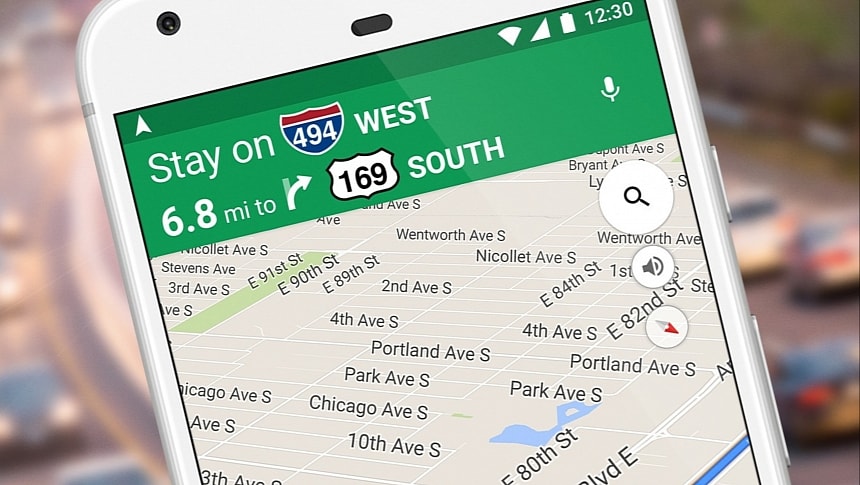Using Google Maps to get to a destination is sometimes a double-edged sword if you don't check the directions thoroughly before you hit the road. The tiniest error in its routing engine or the provided maps could send you to the middle of nowhere.
This is what happened recently in Emery County, where drivers typing "Utah" in the Google Maps address bar ended up being sent to East Mountain.
Local authorities claim emergency services must help people getting stranded on the remote road several times per month, explaining that Google ignored their calls to update the Google Maps directions for years.
The latest incident convinced the search company that it was time to fix the error.
An 18-wheeler hauling a 53-foot reefer carrying Red Bull followed Google Maps to find "Utah." The driver unknowingly entered the remote area and eventually got stuck in the mud. He called the emergency team, but due to the large vehicle, the driver was rescued, and the semi remained in place until the next day. Pulling the 18-wheel out of the mud wasn't an easy business, so authorities closed East Mountain.
Officials claim they contacted Google not once, not twice, but 40 times in the last few years. The company ignored their requests for an update, so they turned to plan B: they erected signs telling drivers that the remote road wouldn't get them to Utah and they would lose their cell phone signal. The road may be impassable due to storms, one of the signs read.
As expected, some drivers still ignored the warnings and trusted Google Maps blindly, eventually getting lost or stuck or running out of gas.
Google updated Google Maps after the 18-wheeler incident, so putting Utah in the address box no longer sends drivers to East Mountain.
There's another side of the story in this case, though. An 18-wheeler hauling a 53-foot reefer must not use Google Maps for navigation. The reason is as simple as possible: Google Maps does not integrate truck navigation, meaning the directions it offers are optimized for passenger vehicles. A large vehicle, like an 18-wheeler, requires dedicated navigation software that takes into account its dimensions and cargo size.
Google Maps ignores all these factors and sends drivers to any road without knowing they are driving a large vehicle. Eventually, these vehicles could get stuck on narrow roads, under low bridges, or in regions where they can't fit. Google has never commented on a possible truck navigation mode in Google Maps, but the company doesn't seem to be planning on expanding its software in this direction, focusing on standard navigation for cars, bikes, walking, and public transportation in urban regions.
The top companies offering truck navigation software are Sygic, MapFactor, Garmin, and TomTom.
Local authorities claim emergency services must help people getting stranded on the remote road several times per month, explaining that Google ignored their calls to update the Google Maps directions for years.
The latest incident convinced the search company that it was time to fix the error.
An 18-wheeler hauling a 53-foot reefer carrying Red Bull followed Google Maps to find "Utah." The driver unknowingly entered the remote area and eventually got stuck in the mud. He called the emergency team, but due to the large vehicle, the driver was rescued, and the semi remained in place until the next day. Pulling the 18-wheel out of the mud wasn't an easy business, so authorities closed East Mountain.
Officials claim they contacted Google not once, not twice, but 40 times in the last few years. The company ignored their requests for an update, so they turned to plan B: they erected signs telling drivers that the remote road wouldn't get them to Utah and they would lose their cell phone signal. The road may be impassable due to storms, one of the signs read.
As expected, some drivers still ignored the warnings and trusted Google Maps blindly, eventually getting lost or stuck or running out of gas.
Google updated Google Maps after the 18-wheeler incident, so putting Utah in the address box no longer sends drivers to East Mountain.
There's another side of the story in this case, though. An 18-wheeler hauling a 53-foot reefer must not use Google Maps for navigation. The reason is as simple as possible: Google Maps does not integrate truck navigation, meaning the directions it offers are optimized for passenger vehicles. A large vehicle, like an 18-wheeler, requires dedicated navigation software that takes into account its dimensions and cargo size.
Google Maps ignores all these factors and sends drivers to any road without knowing they are driving a large vehicle. Eventually, these vehicles could get stuck on narrow roads, under low bridges, or in regions where they can't fit. Google has never commented on a possible truck navigation mode in Google Maps, but the company doesn't seem to be planning on expanding its software in this direction, focusing on standard navigation for cars, bikes, walking, and public transportation in urban regions.
The top companies offering truck navigation software are Sygic, MapFactor, Garmin, and TomTom.















